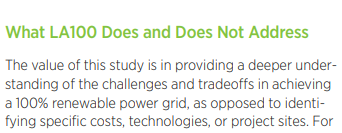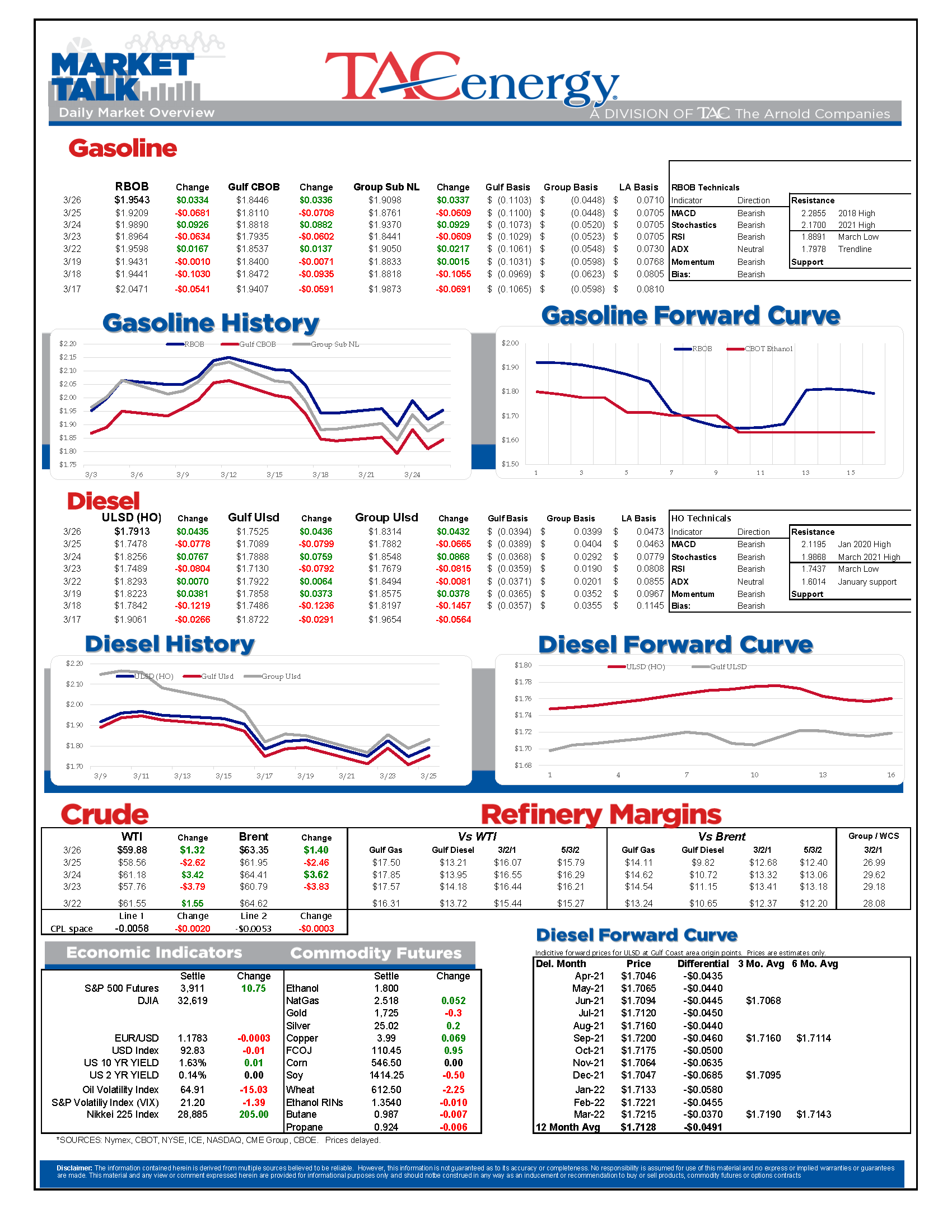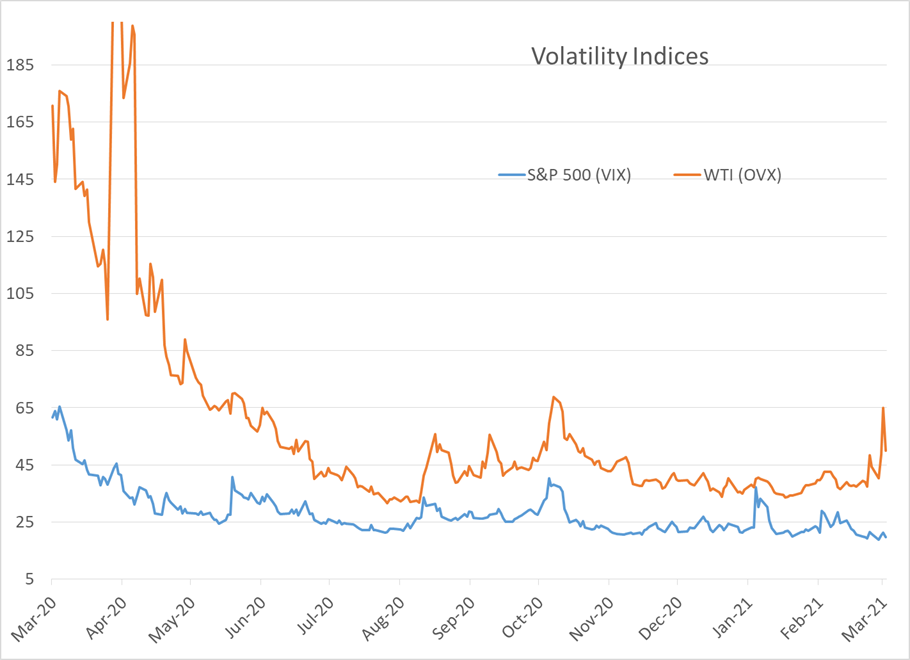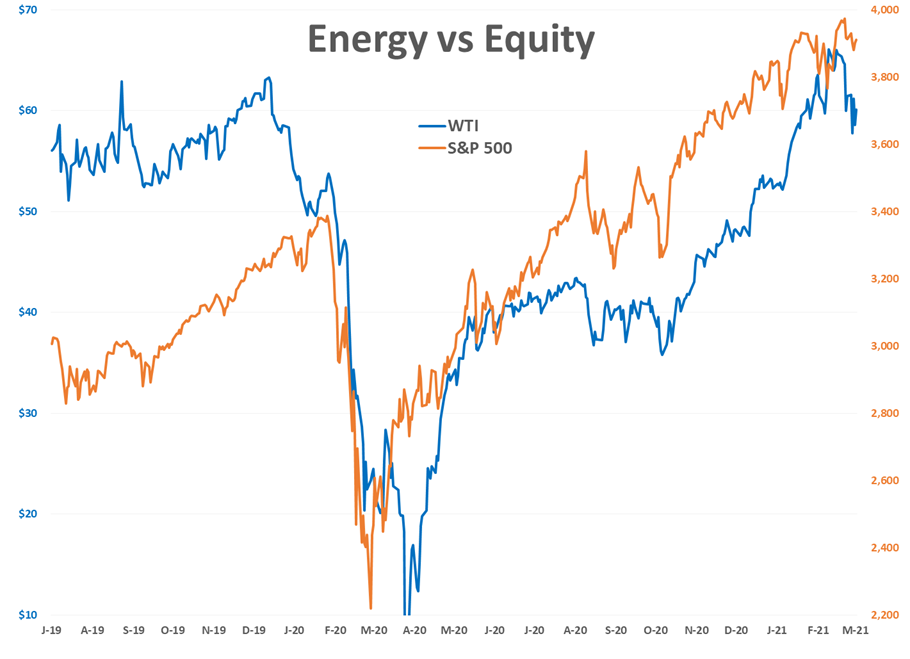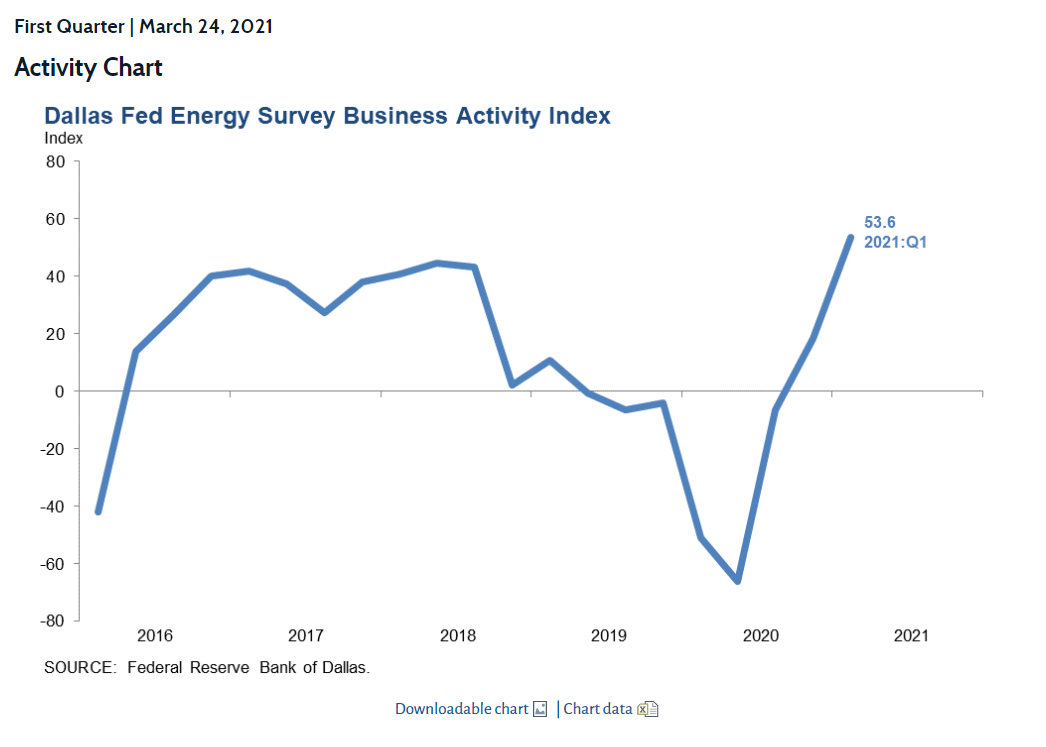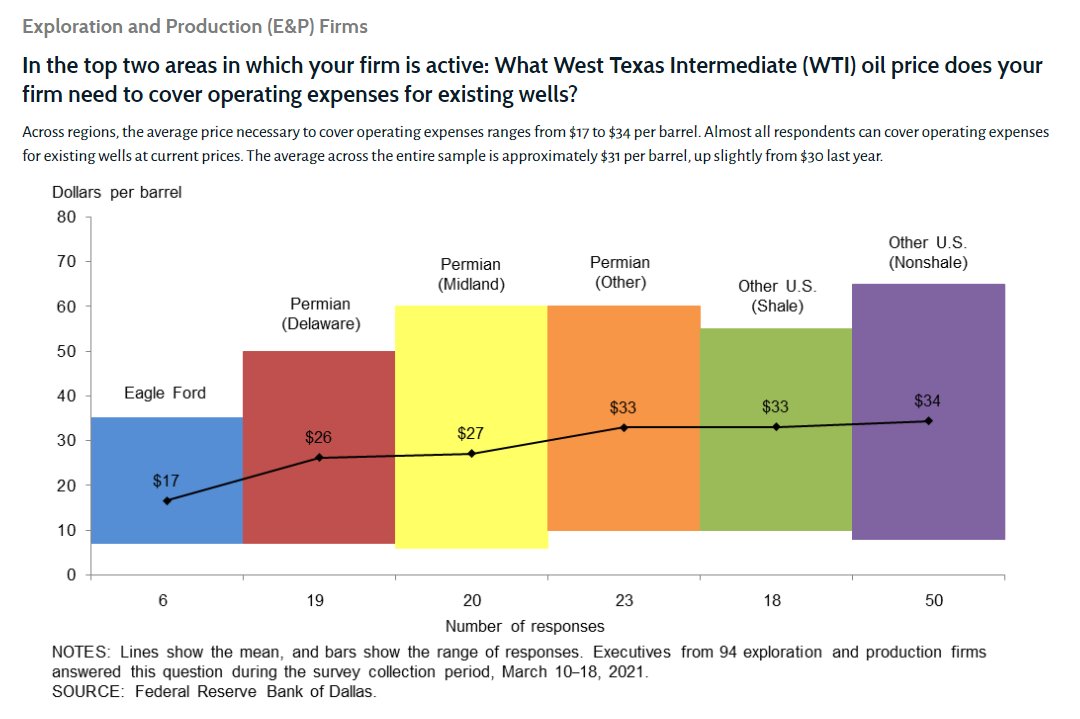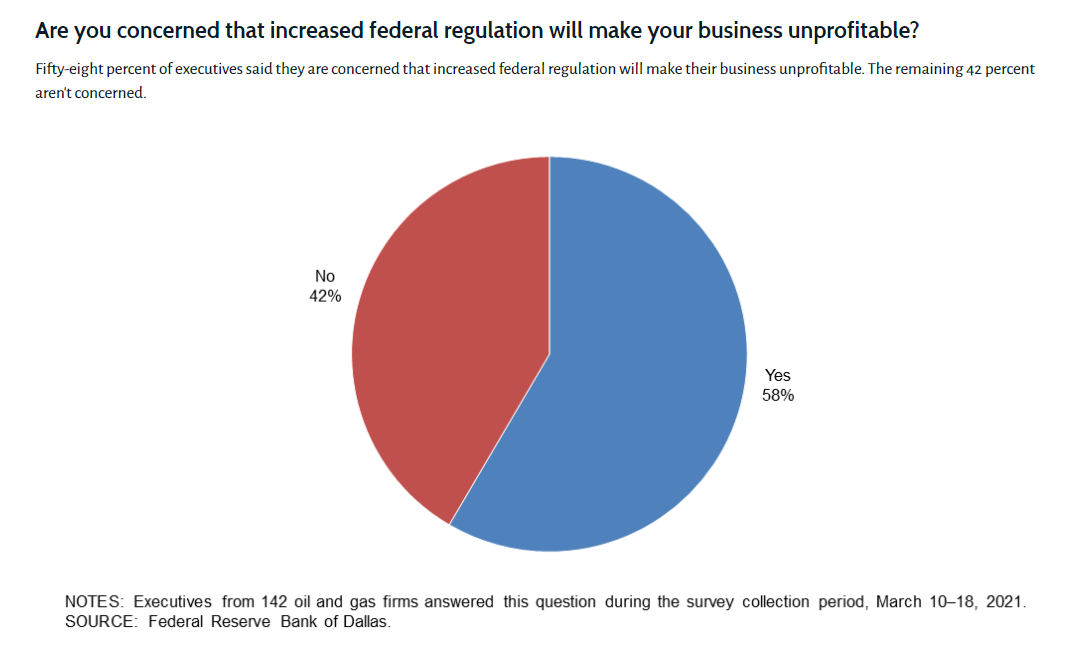Volatility Returns To The Energy Arena

March madness is not disappointing this year as volatility returns to the energy arena, making 5% price swings a common occurrence. This week’s action has been a rollercoaster with huge selloffs Tuesday and Thursday surrounded by strong rallies Monday, Wednesday and Friday that have kept the selling that started last week from snowballing into an outright price collapse.
When this type of wild back and forth action happens, it helps to look at the weekly charts to get a sense for the bigger picture, and to see that despite multiple days of 8 cent or greater moves, ULSD futures are only down 2 cents on the week, while RBOB prices are up 1.5, and those small net moves have done little to change the technical outlook going forward. That said, this type of manic price movement is often seen at the end of a trend, so there’s still a strong case to be made that after a huge rally from November-March, lower prices are coming, and could be here soon if chart support breaks next week.
The Suez canal blockage continues to be a major story this week, with new estimates suggesting it may take weeks not days to clear the stranded ship. While that continues to be an easy headline to pin the blame on a rally, it doesn’t explain why oil and product prices 6 months forward are rallying about the same amount this morning.
On the flip side, European COVID lockdowns are the easy smoking gun for the days when prices collapse, even though it would be hard to justify prices 1 year forward dropping due to those temporary measures. The drop in European demand should also help limit the fallout from the Suez canal blockage that’s keeping some 3 million barrels/day of oil and refined products stranded at sea.
There does seem to be a “risk on” vs. “risk off” feel to the wild back and forth this week, even though the correlation between daily price moves between equity, currency and energy markets is almost non-existent.
Today’s refining lesson: Don’t rain oil on your neighbors. The EPA announced it was pulling an expansion permit for the Limetree Bay (FKS Hovensa) refinery in St. Croix after multiple lawsuits filed to challenge its restart. It’s important to note that decision will not halt operations at the refinery, but will make expansion a challenge, and given the events of the past two months feels like just the start of the regulatory changes coming. For those that were around when Hovensa was operating, its location and ability to import barrels all along the U.S. East Coast often gave its operations an outsized influence on (NY Harbor based) RBOB and ULSD prices.
The Dallas Fed’s energy survey for March showed a strong recovery in oil and gas operations as producers that had been on the brink for much of the past year took advantage of the rally in prices. Continued expansion is predicted in the survey results, and the chart of break evens shows that we should see operations continue to increase with just about all basins securely in the black at current price levels.
Los Angeles has revealed a study that would allow it to use 100% renewable energy sources to power its electric grid by 2035, even as it remains one of the only coal burning municipalities left in the state. The plan is simple: “Build solar farms, wind turbines and batteries as fast as possible.” The plan to pay for it is: not part of the study.
Click here to download a PDF of today's TACenergy Market Talk.
Latest Posts
Crude Oil Inventories Climbed Above Year-Ago Levels For The First Time In 2024
Week 17 - US DOE Inventory Recap
The Energy Complex Is Trading Modestly Lower So Far This Morning With WTI Crude Oil Futures Leading The Way
Energy Futures Are Drifting Quietly Higher This Morning
Social Media
News & Views
View All
Crude Oil Inventories Climbed Above Year-Ago Levels For The First Time In 2024
Sell by May then go away.
The old trading adage looked good for energy markets in 2024 as the new month started off with the biggest daily sell-off of the year so far. WTI and ULSD contracts are now in “rally or else” mode on the charts with sharply lower prices a strong possibility now that technical support layers have broken down. RBOB doesn’t look quite as bearish on the charts, but seasonal factors will now act as a headwind as we’re well into the spring peaking window for gasoline prices, and we’ve already seen a 27 cent drop from the highs. If RBOB can hold above $2.50 there’s a chance to avoid a larger selloff, but if not, a run towards $2.20 for both gasoline and diesel looks likely in the months ahead.
The selling picked up steam following the DOE’s weekly report Wednesday, even though the inventory changes were fairly small. Crude oil inventories continue their steady build and climbed above year-ago levels for the first time in 2024. Demand for refined products remains sluggish, even after accounting for the RD consumption that’s still not in the weekly reports, and most PADDs are following a typical seasonal inventory trend. The Gulf Coast saw a healthy build in diesel inventories last week as the export market slowed for a 3rd straight week. Refinery runs dipped modestly last week following a handful of upsets across the country, but overall rates remain near normal levels for this time of year.
The Transmountain pipeline expansion began operations yesterday, completing a 12-year saga that has the potential to materially change refining economics for plants in the US that relied heavily on discounted Canadian crude to turn profits over the past decade.
The P66 Borger refinery reported another operational upset Monday that lasted a full 24 hours impacting a sulfur recovery unit. Last week the company highlighted how the plant’s fire department helped the surrounding area when the largest wildfire in state history came within feet of the facility.
The EPA approved a new model to determine life cycle carbon intensity scores this week, which cracks open the door for things like ethanol to SAF, which were previously deemed to not reduce emissions enough to qualify for government subsidies. The new model would require improved farming techniques like no-till, cover crop planting and using higher efficiency nitrogen fertilizer to limit the damage done by farms that no longer rotate crops due to the ethanol mandates. Whether or not the theoretical ability to produce SAF comes to fruition in the coming years thanks to the increased tax credit potential will be a key pivot point for some markets that find themselves with too much RD today, but could see those supplies transition to aviation demand.
The FED continues to throw cold water on anyone hoping for a near term cut in interest rates. The FOMC held rates steady as expected Wednesday, but also highlighted the struggles with stubbornly high inflation. The CME’s Fedwatch tool gave 58% odds of at least one rate cut by September before the announcement, and those odds have slipped modestly to 54% this morning.

Week 17 - US DOE Inventory Recap

The Energy Complex Is Trading Modestly Lower So Far This Morning With WTI Crude Oil Futures Leading The Way
The energy complex is trading modestly lower so far this morning with WTI crude oil futures leading the way, exchanging hands $1.50 per barrel lower (-1.9%) than Tuesday’s settlement price. Gasoline and diesel futures are following suit, dropping .0390 and .0280 per gallon, respectively.
A surprise crude oil build (one that doesn’t include any changes to the SPR) as reported by the American Petroleum Institute late Tuesday is taking credit for the bearish trading seen this morning. The Institute estimated an increase in crude inventories of ~5 million barrels and drop in both refined product stocks of 1.5-2.2 million barrels for the week ending April 26. The Department of Energy’s official report is due out at it’s regular time (9:30 CDT) this morning.
The Senate Budget Committee is scheduled to hold a hearing at 9:00 AM EST this morning regarding a years-long probe into climate change messaging from big oil companies. Following a 3-year investigation, Senate and House Democrats released their final report yesterday alleging major oil companies have internally recognized the impacts of fossil fuels on the climate since as far back as the 1960s, while privately lobbying against climate legislation and publicly presenting a narrative that undermines a connection between the two. Whether this will have a tangible effect on policy or is just the latest announcement in an election-yeardeluge is yet to be seen.
Speaking of deluge, another drone attack was launched against Russian infrastructure earlier this morning, causing an explosion and subsequent fire at Rosneft’s Ryazan refinery. While likely a response to the five killed from Russian missile strikes in Odesa and Kharkiv, Kyiv has yet to officially claim responsibility for the attack that successfully struck state infrastructure just 130 miles from Moscow.
The crude oil bears are on a tear this past week, blowing past WTI’s 5 and 10 day moving averages on Monday and opening below it’s 50-day MA this morning. The $80 level is likely a key resistance level, below which the path is open for the American oil benchmark to drop to the $75 level in short order.
Click here to download a PDF of today's TACenergy Market Talk.
